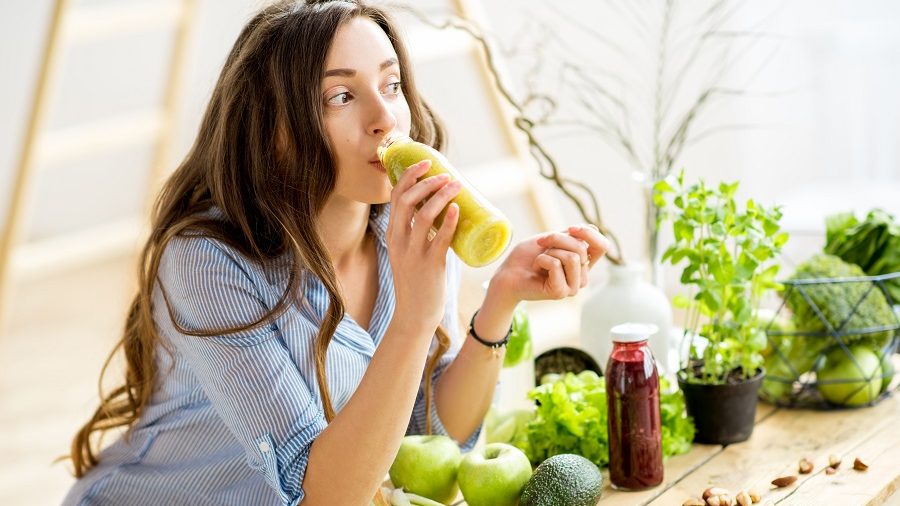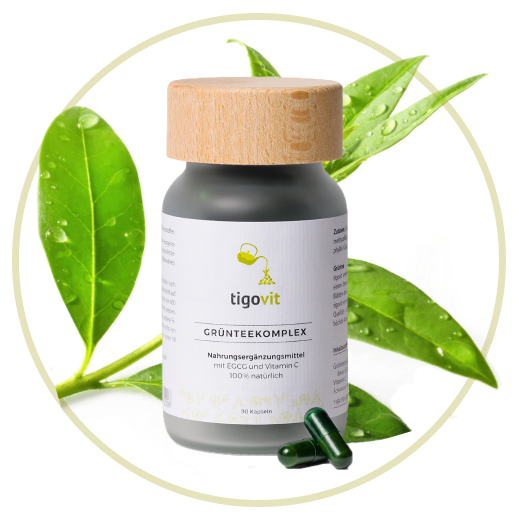
Es gibt nur wenige Menschen, die Süßigkeiten nicht mögen. Süßes kann zwar den Hunger nicht stillen, aber Süßigkeiten sind köstlich und machen Lust auf mehr. Dafür gibt es einen Grund, denn unsere Vorfahren wussten bereits, dass etwas, das süß schmeckt, nicht giftig ist.
Bitterkeit hingegen warnt uns davor, dass ein Lebensmittel ungenießbar oder verdorben sein könnte. Trotzdem ist mäßig bitter gesund. Durch den Verzehr bitterer Lebensmittel nehmen wir die nützlichen Inhaltsstoffe bitterer Substanzen auf.
Was sind Bitterstoffe? Und warum sind sie wichtig?
Bitteres Obst und Gemüse sind eine wichtige Quelle für Vitamine, Spurenelemente, Ballaststoffe und Antioxidantien. All dies hält unsere Ernährung gesund und ausgewogen. Es gibt mehrere Gründe, warum es gut ist, bittere Kräuter und Lebensmittel in Ihre Ernährung zu integrieren.
Forscher, die die in Pflanzen vorkommenden Bitterstoffe untersuchten, haben starke Argumente dafür, medizinische Bitterkeit für die Gesundheit der Verdauungsorgane sowie für viele andere gesundheitliche Vorteile einzunehmen .
Wenn Sie zu der Gruppe von Menschen gehören, die diese Geschmacksrichtung mögen, betrachten Sie sich als glücklich. Wir werden Ihnen in den folgenden Zeilen erklären, warum.
Warum schmecken wir bitter?
Die Bedeutung des bitteren Geschmacks spiegelt sich in der umfassenden und komplizierten Art und Weise wider, wie unser Körper bittere Substanzen erkennt. Der bittere Geschmack, den wir schmecken, ist nur der Beginn.
Die meisten Wissenschaftler sind sich einig, dass unsere Fähigkeit, bittere Aromen zu erkennen, auf einen Abwehrmechanismus gegen toxische Substanzen angelegt ist.
In der Natur sind bittere und saure Geschmäcker oft mit schädlichen Pflanzen und Früchten verbunden. Aber viele der gesunden Lebensmittel, die wir konsumieren, enthalten unterschiedliche Geschmacksprofile, einschließlich Bitterkeit. Die defensive Vorstellung von bitteren Rezeptoren ist also nur ein Teil der Geschichte.
Bittere Geschmacksrezeptoren
Sie erinnern sich vielleicht an das Diagramm der Rezeptoren auf der Zunge aus der Schulzeit. Aber wenn es um bitteren Geschmack geht, ist die Vorstellung, dass bestimmte Bereiche der Zunge bestimmten Geschmacksrichtungen entsprechen, veraltet. Wir wissen jetzt, dass unsere Fähigkeit, Geschmack zu spüren, viel komplexer ist.
Forscher haben herausgefunden, dass natürliche Rezeptoren für bitteren Geschmack im gesamten Verdauungstrakt vorkommen. Die Erforschung des bitteren Geschmacks und der Reaktion unserer Rezeptoren auf Bitterkeit erweitert unser Wissen darüber, wie bittere Lebensmittel die Verdauung beeinflussen. Tatsächlich scheinen die Vorteile bitterer Verdauungssubstanzen nur der Anfang einer langen Liste zu sein, wie sie mit unserem Körper interagieren.
Wolfgang Meirhoffs Forschungen des Deutschen Instituts für Humanernährung haben das Verständnis der Funktion unserer Rezeptoren für bitteren Geschmack erheblich verändert. Seine Arbeit hat gezeigt, dass diese einzigartigen Geschmacksrezeptoren, TAS2R oder T2R genannt, über 100 verschiedene bittere Geschmacksprofile erfassen können.
Diese bitteren Rezeptoren vermitteln verschiedene Aktivitäten im nervösen, vaskulären und endokrinen (hormonellen) System. Dies bedeutet, dass die bitteren Substanzen, die wir aufnehmen – ob aus den Lebensmitteln, die wir essen, oder aus giftigen Substanzen – Reaktionen über unser Nervensystem und unseren Kreislauf auslösen.
Die einzigartige Natur dieser Rezeptoren bedeutet auch, dass bittere Substanzen beeinflussen können, wie und wann bestimmte Hormone freigesetzt werden.
Bitterkeit ist nicht immer schädlich und einige Bitterstoffe wirken sich positiv auf die Gesundheit aus. Hier sind drei der wichtigsten Vorteile von Bitterstoffen:
- Bitterstoffe stimulieren die Gallensekretion, die für die weitere Ausscheidung toxischer Substanzen aus dem Körper verantwortlich ist.
- Sie verbessern auch die Produktion von Magensäure, die die Verdauung beschleunigt.
- Bitterkeit kann ein Sättigungsgefühl erzeugen, das übermäßiges Essen verhindert.
Aber konzentrieren wir uns auf den ersten genannten Vorteil, den Bitterstoffe uns bieten: die Beseitigung toxischer Substanzen aus dem Körper oder die Entgiftung.
Was bedeutet Detox?
Detox (Entgiftung) bedeutet die Reinigung des Körpers von giftigen oder unnötigen Substanzen. Eine gesunde Ernährung mit vielen Obst- und Gemüsesäften, Entspannungsübungen und Bädern sollte schädliche Substanzen und Toxine über die Ausscheidungsorgane (Leber, Nieren, Darm und Haut) sammeln und beseitigen.
Heutzutage nimmt unser Körper so viele Giftstoffe und Schadstoffe auf, dass er sie ohne Inhaltsstoffe, die die Reinigung fördern und beschleunigen, nicht mehr vollständig ausscheiden kann. Zusätzlich zu einer ungesunden Ernährung voller Zusatzstoffe konsumieren wir jeden Tag schädliche Fette, Zucker, Nikotin, Alkohol, Umweltgifte und sogar Stress.
Verschiedene Entgiftungsmethoden wurden entwickelt, um Toxine zu entfernen und die Haut, das Lymphsystem, den Darm und die inneren Organe zu reinigen.
Wie funktioniert die Entgiftungsbehandlung?
Eine Entgiftungsbehandlung beginnt mit der Darmentleerung. Es folgen Tage des Safttrinkens, in denen neben viel Wasser und Kräutertee nur Obst- und Gemüsesäfte getrunken werden, um den Stoffwechsel und die Verdauung anzuregen. In den folgenden Tagen wird empfohlen, ballaststoffreiche Lebensmittel zu sich zu nehmen, die ausschließlich aus Obst und Gemüse oder Säften aus rohem Gemüse bestehen.
Wie beim klassischen Fasten werden feste Lebensmittel nach und nach wieder eingenommen. All dies kann von Behandlungen wie Massagen und Bädern begleitet werden, um die Entgiftung anzuregen. Sauna, Yoga und lange Spaziergänge an der frischen Luft verstärken ebenfalls die entgiftende Wirkung. Es gibt keine festen Richtlinien für die Dauer und Häufigkeit von Entgiftungsbehandlungen. Einige Menschen entgiften regelmäßig mindestens einmal pro Woche, andere einmal im Monat und noch seltener.
Es ist Zeit für den Frühjahrsputz!
Nach einem langen Winter, in dem wir weniger aktiv sind und gehaltvolles Essen einnehmen, wird empfohlen, einen gründlichen “Frühjahrsputz” durchzuführen. Mit den folgenden Rezepten helfen wir Ihnen dabei, einfach auf “Neustart” zu drücken, um Ihre Energie zu aktivieren.
Detox-Smoothies dienen zur Entgiftung des Körpers und zur Linderung und Beseitigung von Blähungen und Verstopfung. Diese fünf Mahlzeiten können an einem Tag eingenommen werden und dann kehren wir zu unserer normalen Ernährung zurück. Sie können es jedes Mal trinken, wenn Sie Probleme mit der Verdauung haben. Und Sie können auch einen Tag im Monat bestimmen, an dem Sie Ihrem Körper von innen putzen.
5 BESTEN FRÜHLINGS-SMOOTHIES FÜR DETOX
1. “Oranger” Smoothie
Zutaten:
- 3 Karotten
- 1 Paprika
- 1 Gurke
- 1 grüner Apfel
- ½ Zitrone
- 1 Esslöffel Omega-3-Öle
Dieser Smoothie verbessert die Funktion Ihrer Leber und trägt so zur Erhaltung Ihrer Gesundheit bei.
2. Avocado-, Kiwi- und Sellerie-Smoothie
Zutaten:
- 1 Avocado
- 1 Kiwi
- 1 Stück Sellerie
- 1 Esslöffel Sonnenblumenkerne
- eine Handvoll frische Minzblätter
- frisch gemahlener Pfeffer
- ein wenig Meersalz
- 1 Esslöffel Omega-3-Öl
Hacken Sie das Obst und Gemüse klein, bevor Sie es in den Mixer geben. Mischen Sie es zusammen mit den Samen, der Minze und den Gewürzen.
Avocado ist reich an Antioxidantien und Vitaminen E und C. Die in Kiwi enthaltenen Phytonährstoffe dienen dazu, die DNA-Kette zu schützen, freie Radikale zu entfernen und die Gesundheit des Herz-Kreislauf-Systems zu verbessern. Sellerie schützt Sie vor verschiedenen Entzündungen des Darmtrakts, während Minze als Quelle für Magnesium, Eisen und Kalzium das Verdauungssystem unterstützt.
3. Grüner Super-Smoothie
Zutaten:
- 2 Handvoll Spinat
- 1 Teelöffel Spirulina
- 1 Teelöffel Weizengraspulver
- Halbe Gurke
- 1 Teelöffel Matcha-Tee
- 1 Teelöffel Acai-Beere
- ½ frische Zitrone
- Ein Teelöffel Honig
- Wasser
Die Zitrone in Scheiben schneiden und die anderen Zutaten hinzufügen. Dann mischen Sie alles zusammen. Der perfekte Smoothie zur Reinigung des Körpers voller Vitamine und Mineralien.
4. Grünes Bananenfrühstück mit Löwenzahnblättern
Zutaten:
- 2 Tassen gehackte junge Spinatblätter
- Eine Handvoll junger Löwenzahnblätter
- 1 Banane
- 1 Karotte, geschält und in Stücke geschnitten
- 3/4 Tasse Mandelmilch
- 3/4 Tasse Eis
- 2 Teelöffel Honig
In einem Mixer geben und vollständig zerkleinern.
5. Grüner Mangold-Shake
Ein Mangold-Shake hält Sie satt und ist einfach zuzubereiten.
Zutaten:
- Eine Handvoll frischer Mangold
- Eine Handvoll Rucola
- 2 frische grüne Äpfel
- 1 Esslöffel gemischte Samen
- Saka Walnuss
- 2 Tassen Wasser oder Mandelmilch
- 1 Esslöffel Omega-3-Öl
Schneiden Sie den Mangold in der Mitte ab und lassen Sie nur die weichen Teile übrig. Alles in einen Mixer geben und vermengen.
Chlorophyll, das Mangold eine schöne grüne Farbe verleiht, fördert die Ausscheidung von Schwermetallen aus dem Körper über den Urin. Durch das Blut versorgt Chlorophyll das Gewebe mit Sauerstoff und ermöglicht die Beseitigung von Toxinen durch die Atmung.
Frühlingsentgiftung ist Ihre Chance, aufzuwachen und Ihren Körper für die neue Saison zu verjüngen. Machen wir uns also an die Arbeit, beginnen Sie neu und reinigen Sie Ihren Körper und Ihr Leben im Frühjahr. Treffen Sie die Wahl, strahlend und gesund zu sein. Die perfekten Smoothies haben Sie jetzt dafür bekommen.
Bilder:
liza54500/shutterstock – 406506031
Jan Sedivy on Unsplash
Alisha Mishra von Pexels
Anna Tukhfatullina Food Photographer/Stylist von Pexels
Polina Tankilevitch von Pexels








